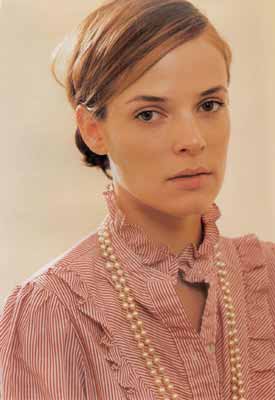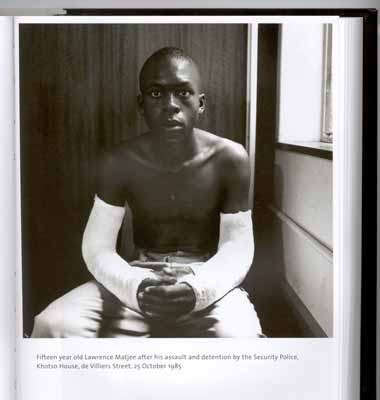
Roe Ethridge.
Nancy, 2000.
C-print,
38" x 30".
At the beginning is a fairly large color photo portrait (torso) of a blonde young woman, Nancy, by Roe Ethridge. Toward the end is a larger portrait of a dark-haired young woman, Untitled #12 from End of an Age Series, by Paul Graham. Simple human portraits, faces, colors restricted to Caucasian skin, blue and brown eyes, blonde and black hair, red-striped and black shirts, light and dark neutral backgrounds. Between are 27 other works--photos, paintings, one on hanging cloth, and another with wrapping paper and plastic--by 21 artists. The range of colors is sometimes harsher (the subjects certainly are), but somehow always within the compass of those portraits, and the compass of their emotions. I don't know how they might appear in another context, but here they absorb and at the same time give life to everything around them. They are the conscience, or at least the filter, of the rest of the work, the curator, and the viewer, especially since Nancy is the first picture one sees entering the gallery. Simple, complex human portraits.
The two young women define where we are, and because they are there it is more difficult (for me, at least) to dismiss the art and situations that come between. ("Oh yes, David Goldblatt is South African. He does apartheid. That's enough to know, isn't it?" Or, "Rebecca Quaytman does the Holocaust. That takes care of that." "Robert Ryman does dematerialization. There's nothing to look at.")


